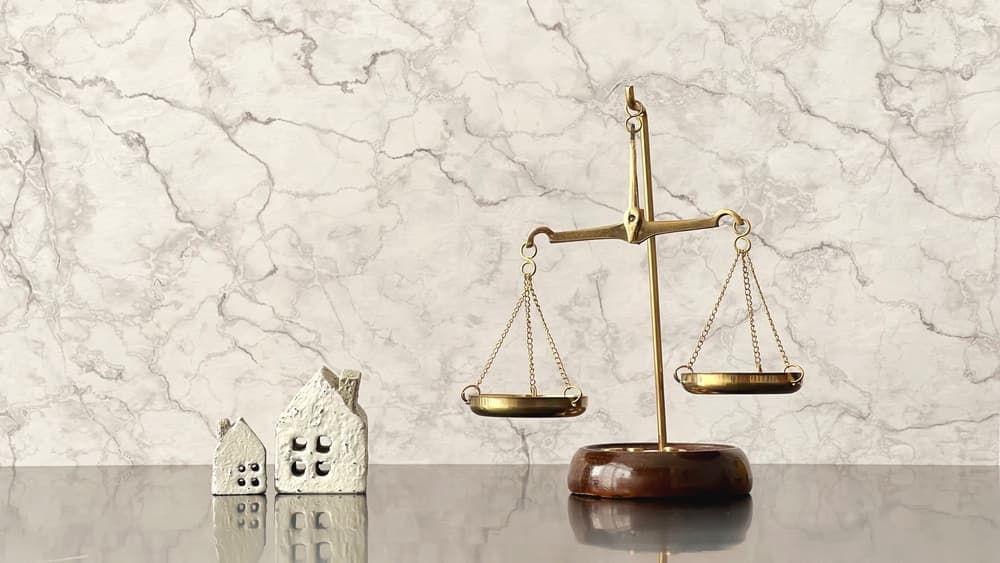Types of Construction Defects

Whether you’re a homeowner, builder, or contractor, understanding the common types of construction defects is necessary for your peace of mind and financial well-being. Construction defects can range from minor cosmetic issues to major structural problems that compromise the safety and integrity of a building.
You may have realized something was seriously wrong before a project was completed. Alternatively, you may have come to learn of defects over time as things break and the structural integrity of any building may come to be at risk. Either way, construction defects have significant impacts on you, and they can keep you from using the project entirely.
A construction job is a contract, and the builder must deliver following the strict terms of the agreement. If they fail to do so, they may be held liable in a breach of contract lawsuit. The customer can obtain monetary damages in a settlement or if the case goes to court.
Anyone who suspects a dispute over a construction defect should immediately consult a construction defect lawyer to learn more about their legal rights and whether they may be entitled to legal relief under the terms of your contract.
Causes of Construction Defects

The contractor does not have to be negligent to cause construction defects. They may be using reasonable building methods and following code, and a problem may still arise as the project proceeds.
In most cases, however, the contractor cuts some corners, resulting in a preventable construction defect. Some causes of construction defects include:
- Failure to hire experienced and knowledgeable design professionals for the job
- Using substandard materials for the job
- Failure to train construction workers on appropriate job techniques
- Lack of oversight of the construction project
- Not properly surveying the site or soil before building
- Substandard methods of installing electrical or plumbing systems on the site
Regardless of the cause, construction defects can result in a significant hassle and a financial loss to property owners and many other parties. Because of these defects, parties like you cannot benefit from the project you already paid for.
Patent Defects in a Construction Project
One of the main distinctions involved in construction defect cases is whether the problem is patent or latent. This distinction can determine whether you can successfully sue a builder for the defect and obtain financial compensation.
The law encourages you to take steps to protect yourself during the building process. It aims to be fair to the builder, too. You simply cannot overlook obvious problems during the building process and before you have accepted possession of the construction. You must raise concerns as they arise during the process.
Patent defects proceed under the legal theory that some defects are too glaring to ignore. These types of defects should be very obvious to the naked eye, and they are the type that you will ordinarily notice and point out to the builder for them to repair.
Examples of patent defects may include:
- Cracks in the foundation that are visible
- Rotted wood
- Leaks in the roof
- Electrical systems that do not work
- Faulty or leaking roofs
Patent defects are those you can discover through a reasonable inspection. You are not expected to dig too deeply, but you are expected to take steps to learn of problems that are open and obvious. For these reasons, you should conduct your own inspection before you accept delivery of a construction project. The builder cannot prevent you from making an inspection.
While you can sue for patent defects, it may be harder to obtain financial recovery. You can only usually sue for patent defects if the contractor refuses to address them. However, you have a certain period in which to address the matter with the contractor. You will lose the right to file a construction defect lawsuit if you do not act within a certain amount of time. Not knowing about the defect because you did not conduct a reasonable inspection does not give you extra time to file a lawsuit.
Note that the concept of “caveat emptor” makes its way into the legal process when you only choose to take action about a patent defect after you have accepted a construction project. Paradoxically, the bigger and more obvious the contractor’s mistake, the harder it is for you to do something about it later in time.
What Are Latent Defects?
Latent defects can also be an area fraught with legal risk for you. Latent defects lurk beneath the surface, and they are not readily apparent to the naked eye, even if you have made a reasonable inspection of the structure prior to accepting it. Latent defects are those you may find out about later, only after something starts to go wrong. Then, you realize you have accepted possession of the project, but the builder did not live up to what they promised you in the contract.
A latent defect is hidden, but it does not necessarily mean the builder took steps to keep you from learning about it. They may have taken some shortcuts in building the project, but they may not have been aware there was a latent defect when they turned the project over to you.
A latent defect will not occur if the builder did their job properly. They may have used deficient materials or even a defective design. The contractor may not have properly supervised the project while building it, and the defects do not manifest until some point in the future.
Some examples of latent defects may include:
- Electrical problems
- Flooding, because of improper installation of plumbing or poor drainage
- Cracks in the foundation (these cracks may appear over time, as opposed to when you performed an inspection prior to taking ownership of the project)
- Mold and dry rot that form in the future
Material Defects vs. Non-Material Defects
Some defects may be minor in nature, and it may be more challenging for you to be compensated for them. Material defects will make a difference, and they will cost you money. These defects affect your day-to-day ownership of the property, and may render the property less usable or even unusable. These defects will likely require repair work and new labor and materials if the project can even be salvaged at all.
Non-material defects are less severe, but they may still affect you. It may still be possible to obtain compensation for a non-material defect because you are not benefiting from the bargain. The contractor has the obligation to deliver exactly what they promised you to the letter (although some defects may not be serious enough to warrant a lawsuit).
Design Defects
The contractor may have delivered a defective project because the design itself was defective. They may simply not have had the chance to get things right because they were using a design that never had a chance to be successful in the first place.
The contractor may have hired the design professional, or they may have designed it themselves (in a design-build contract). You may even hold a third-party architect or designer liable if a defect in the design is what caused problems with the project.
Workmanship Defects
Some construction defects may result from shoddy construction work. Poorly trained or supervised workers may not have taken the time to appropriately install a system or undertake the construction. The workers may have been pressured to cut corners because the contractor was behind on the job, and they had to deliver the project on time. Workmanship defects can cause issues ranging from minor to serious, and they can even threaten the structural integrity of the project. You may not learn of shoddy workmanship until well after you have taken delivery of the project when things start to break. When the contractor hands over the project, everything looks well-built and brand-new.
What Can You Do About Construction Defects?
A construction project is the result of a contract between you and the contractor. You have the obligation to make payments in accordance with the terms of the contract. The contractor has the legal obligation to deliver what they promised in the contract. There may be specific requirements in the contract that govern the finished product. In addition, there are various common law warranties that the builder will make as part of their job. If the builder has provided you with a project with defects, you may have the right to take legal action that can result in you being compensated. Breach of warranty claims are filed right alongside breach of contract allegations in the same lawsuit.
The one thing that you may be unable to do is to repudiate the contract and refuse to make further payments. There may be breaches of contract allowing you to not make further payments, but defects are generally not considered to be that type of breach. If you take matters into your own hands, you are taking a very large legal risk because you can be liable for breach of contract yourself. Never take any steps on your own without the advice of a construction lawyer.
Why You Need a Construction Lawyer

Anything you do (or do not do) when you have a dispute with a contractor can determine your legal rights going forward. While you have a written contract, your actions are also factored in when a court is deciding a construction dispute. You should engage a construction attorney early in any dispute process so they can give you advice and represent you when dealing with the builder.
A construction lawyer can engage the contractor’s attorney or respond to communications from them. You may be better off resolving your dispute informally, although you do not have to compromise on your right to a finished product free of legal defects. You may even participate in mediation with the builder to resolve the dispute.
Mediation involves the parties sitting down with a neutral mediator who facilitates conversation and compromise. This can be a less costly and stressful way to reach an agreement regarding how to resolve the construction defect. Your construction attorney will provide advice during mediation and before you sign any mediation agreement.
Your contract may require you to arbitrate any dispute with the builder, and your construction attorney will represent you in the process. Arbitration is a binding legal process where a neutral third party will issue a ruling on the dispute after hearing the evidence and each party’s position. In some cases, arbitration may work to your benefit because it can give you a quicker and less expensive route to addressing your dispute.
If you cannot resolve the dispute through alternative dispute resolution, or if the contractor simply refuses to engage with you, it is your option to file a lawsuit against them in court. You may seek compensation for the damages they caused you. The contractor may be liable for the costs of repairing the defect or for the diminution in value of the project in light of the defects. You may even be able to rescind the transaction entirely, although this is a rarer outcome, as courts hesitate to issue this type of injunctive relief.
Nonetheless, your construction lawyer will review your case and determine what you may seek from the court. They will prepare and file the proper paperwork to initiate a claim.
How a Construction Lawyer Helps Your Case
A construction lawyer can help your case by doing the following:
- Investigating your dispute and gathering facts that can be used to prove your case
- Working with experts to determine the nature and extent of the defects
- Estimating the value of your damages
- Helping you decide the most effective legal path to financial compensation
- Negotiating a potential settlement with the other party
- Litigating your case in court if you cannot resolve your dispute
If you have not already hired a Seattle construction attorney, the time to do so is now. Getting legal help early can give you more options to resolve your dispute or take legal action. Your construction attorney can advise you on handling the dispute before it reaches the point of legal action.



